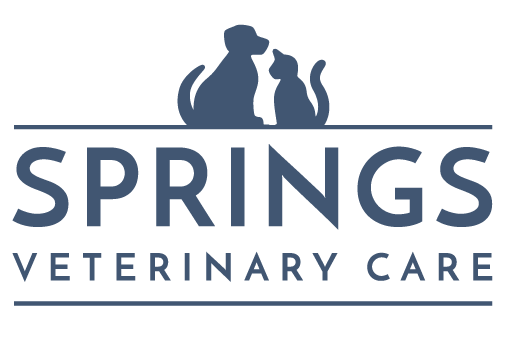Penelope, a 9-year-old spayed female dachshund, came to Springs Veterinary Care with an extreme case of bad breath. Her owners even dubbed her “Stinky Penelope.” Dr. Amanda Smith examined Penelope, identifying dental disease and bad breath. She graded Penelope’s periodontal disease at 4/4, the most advanced disease, and an indication of advanced gum disease and bone loss. Dr. Smith recommended a senior health screen, and if the screen showed good organ function, dental radiographs and dental work.

Penelope’s radiographs, showing extensive periodontal disease
Penelope’s senior health screen included a complete blood count (CBC), a chemistry profile, a urinalysis, a thyroid check, a fecal analysis, and a heartworm test. All her senior screenings came back with normal values, indicating good organ function and that Penelope was free of common intestinal and blood parasites.
Dr. Smith proceeded with her plan and anesthetized Penelope for dental radiographs. Radiographs showed that Penelope had severe periodontal disease, and, as a result, bone loss. The halitosis, or bad breath, is a result of periodontal disease as well.

An example of a healthy dental radiograph.
Periodontal disease – which includes gingivitis (inflammation of the gums) and periodontitis (loss of bone and soft tissue around the teeth) – begins with plaque. Bacteria in the mouth stick to pets’ teeth, forming a bacterial film. This causes a buildup of plaque when not removed by daily cleaning. Minerals in the saliva react with plaque to form calculus (tartar). When plaque and tartar spread beneath the gum line, the tissues around the teeth become damaged, leading to tooth loss over time.
The mouth isn’t the only thing affected by periodontal disease. Left unchecked, dental disease can affect the heart, liver, and kidneys, leading to major health problems.
Penelope’s periodontal disease was advanced, leading to her bad breath. However, this is one of few signs of the disease, and one that may not appear until the disease is extreme. Pet owners shouldn’t use breath as a monitor of dental health. Dental disease often shows no signs at all, making regular dental exams and cleanings essential to pets’ health. Without regular checkups, periodontal disease often results in tooth extractions.
For Penelope, the periodontal disease and bone loss required extraction of several teeth to remove permanently damaged teeth, eliminate dental pain, eliminate a source of infection, and protect Penelope’s mouth and internal organs. Dr. Smith made a plan to extract several teeth. Due to the advanced state of Penelope’s periodontal disease, Dr. Smith knew it would the dental surgery would take more time than the amount of time Penelope should spend under anesthesia. Consequently, Dr. Smith scheduled Penelope for two separate dental surgeries.
Altogether, Penelope had 15 teeth removed. Penelope recovered well. After only seven days, Penelope was able to eat dry food. The infection in her mouth is cleared and, of course, her breath is much better!
“Penelope is now – and will continue to be – a significantly healthier pup!” said Dr. Smith.
Dr. Smith’s recommendation for Penelope’s owners is to care for her remaining teeth by scheduling annual or bi-annual dental exams, and annual dental cleanings at Springs Veterinary Care. Penelope’s owners also can maintain her teeth between cleanings with treats and chews that promote dental health. They should also brush Penelope’s teeth daily or near-daily with a dog-specific toothpaste. With these measures, Penelope’s teeth will remain clean and healthy.
We very much appreciate Penelope’s owners assent to share this case and educate others on the importance of dental exams and dental cleaning.
